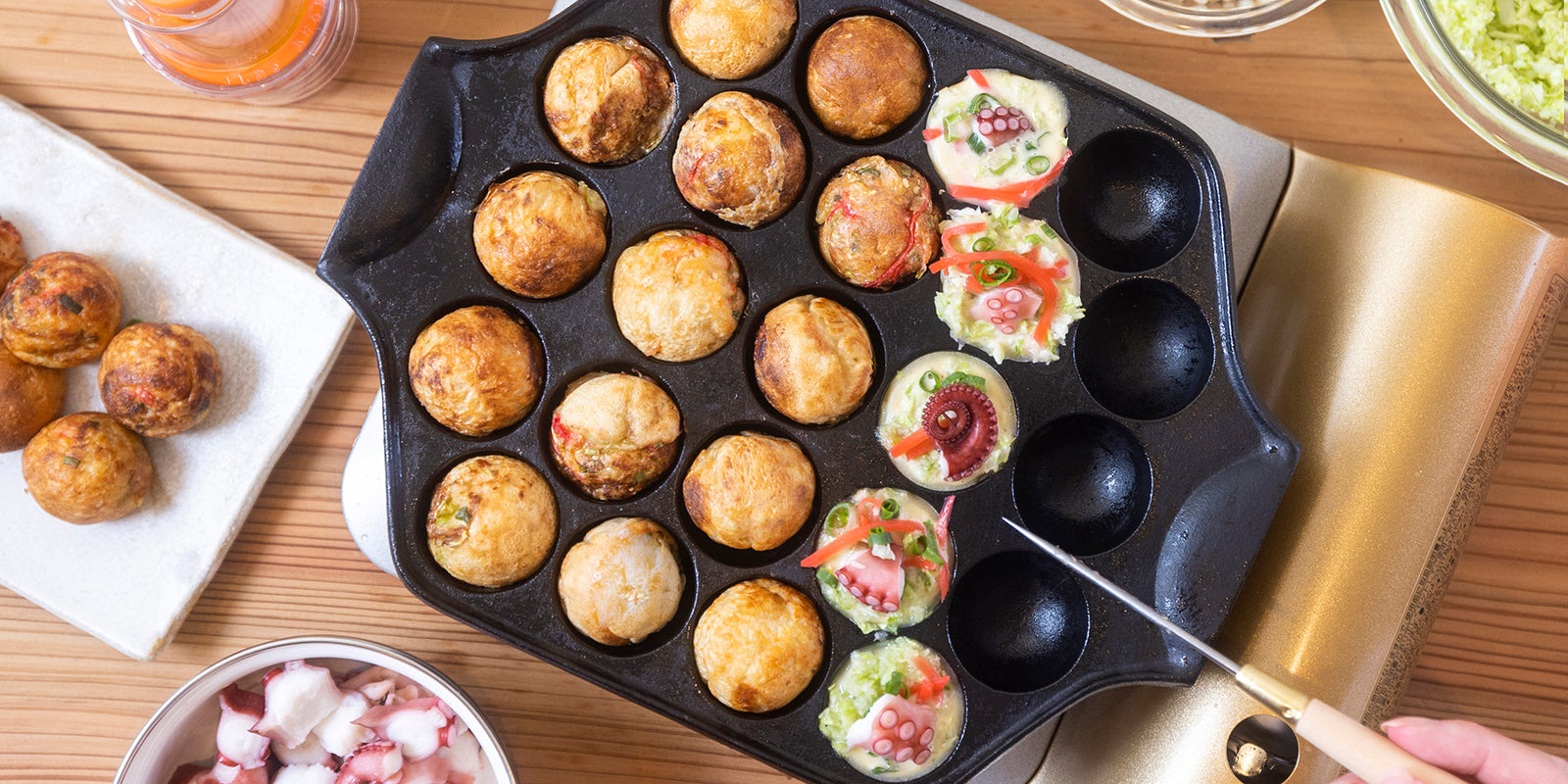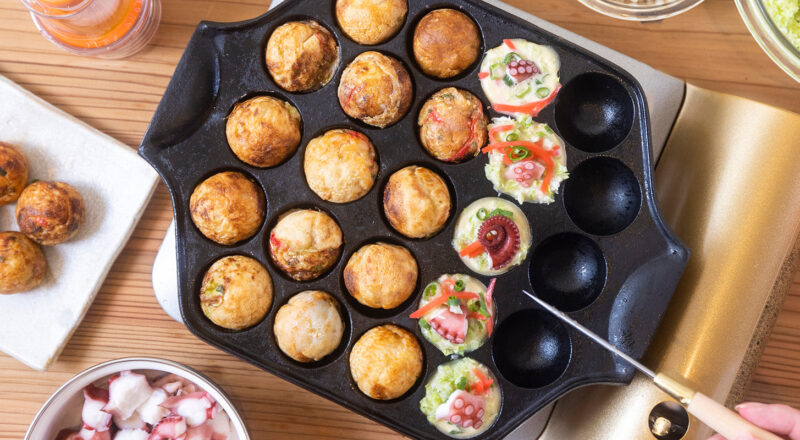When it comes to creating delightful culinary treats, professionals and enthusiasts will likely encounter the intriguing debate around the Takoyaki Pan vs Aebleskiver Pan: Whats the Real Difference? Both pans, while similar in design, serve distinct purposes and cater to unique cuisines. Understanding the nuanced differences between these pans can help enhance your cooking experience, whether you’re crafting Japanese street food or traditional Danish delights.

Understanding the Takoyaki Pan
The Takoyaki Pan originates from Japan and is renowned for crafting the beloved street food known as Takoyakia savory snack filled with diced or minced octopus, tempura scraps, pickled ginger, and green onions.
This pan is characterized by its numerous small, semi-spherical molds that allow for even cooking of the batter filled with delicious ingredients. Typically made of cast iron or aluminum, the pan ensures perfect heat distribution which is vital for achieving the crispy, golden exterior of authentic Takoyaki.
What Makes a Takoyaki Pan Unique?
Beyond crafting iconic Takoyaki, this pan’s recognition comes from its durable construction and ease of use, making it a staple in Japanese households. Its ability to produce uniform, mouth-watering snacks sets it apart as a versatile tool in any kitchen.
Exploring the Aebleskiver Pan
On the other side of the culinary spectrum lies the Aebleskiver Pan, a Danish invention revered for making Aebleskiver, which are delectable pancake puffs.
Similar in structure to its Japanese counterpart, the Aebleskiver pan features round molds perfect for these fluffy, sweet treats often enjoyed during Christmas. Traditionally composed of cast iron, the pan’s robust build ensures even cooking and the ideal texture for these Danish delights.
The Special Charm of Aebleskiver Pan
What sets the Aebleskiver Pan apart is its culinary heritage and the unique delicacies it produces. While it may share similarities with the Takoyaki pan, its emphasis on sweet batters and lighter pancakes distinguishes it in the world of cooking.
The Key Differences: Takoyaki Pan vs Aebleskiver Pan
Though both pans feature round cavities, the notable difference lies in what they are tailored to cook. The Takoyaki Pan specializes in savory snacks, whereas the Aebleskiver Pan is designed for sweet treats.
Additionally, pan size and cavity depth vary slightly, reflecting the cooking preferences and traditions of their respective cultures. For instance, the batter consistency for each dish requires specific design attributes inherent in these pans.
Material and Construction: A Comparison
Both pans are predominantly made from cast iron, offering excellent heat retention. However, non-stick variants of the Takoyaki pan are more widely available, catering to modern culinary trends.
Heat Source Compatibility
Both pans perform optimally on gas stoves. It’s important to note though, the Takoyaki pan’s adaptability extends to electric stovetops, broadening its usability in contemporary kitchens.
Cooking Techniques: Perfect Takoyaki and Aebleskiver
Mastering the Takoyaki technique involves swiftly rotating the batter with a skewer to ensure a rounded finish. Meanwhile, crafting Aebleskiver requires gently flipping the pancake to preserve its fluffy texture.
Flavors and Variations
While Takoyaki delights with its savory umami notes, the Aebleskiver brings the sweetness, often complemented with fillings like apple slices or drizzles of syrup.
Choosing the Right Pan for Your Kitchen
Deciding between a Takoyaki or Aebleskiver pan depends largely on your culinary interests. Japanese cuisine aficionados might lean towards the former, while those with a penchant for European sweets may find the latter more appealing.
Availability and Pricing
Both pans are readily available online, with options ranging from budget-friendly to high-end variants. Typically, the prices reflect the material quality and additional features such as non-stick coating.
Maintaining Your Cooking Pans
Proper care of both pans involves regular seasoning, especially if made from cast iron, to preserve their non-stick properties and prevent rust.
Proper care not only prolongs the life of the pan but also maintains the quality of the dishes prepared in them.
Storage and Longevity
Store the pans in a dry place and occasionally check for any signs of wear to ensure they remain in top condition for years of culinary adventures.
Conclusion: The Culinary Legacy of Takoyaki and Aebleskiver
The journey through the world of Takoyaki and Aebleskiver pans reveals a rich tradition of global cuisine, celebrated through unique cooking techniques and flavors. While both are tools to craft exquisite delicacies, they serve as cultural bridges, allowing us to savor the flavors of Japan and Denmark in our own kitchens.
For more insights into various cookware and their usage, explore tripod grills or dive into the art of choosing the right material for your cookware needs.

FAQ
1. Can I use a Takoyaki pan to make Aebleskiver?
While technically possible, the results might not be optimal due to differences in pan design tailored specific to each dish.
2. What other dishes can I cook in a Takoyaki pan?
Besides Takoyaki, these pans are versatile enough for mini pancakes or even experimenting with unconventional fillings like cheese or sausage.
3. How do I maintain the non-stick quality of an Aebleskiver pan?
Regular seasoning with a light oil coating and proper storage away from moisture is key to preserving the non-stick surface of cast-iron pans.
This article contains affiliate links. We may earn a commission at no extra cost to you.

